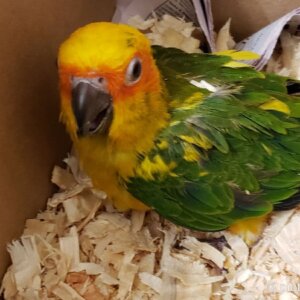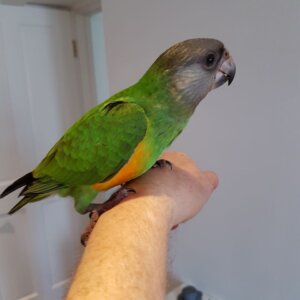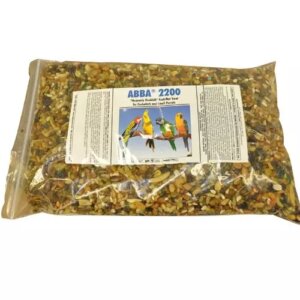Java Finch
$59.99
Origin and History
As the name implies, the Java finch is native to the Indonesian islands, including Java, Bali, and Bawean. They can also be found in Sri Lanka, Hawaii, Jamaica, and Puerto Rico. In Java, this finch is a vulnerable species.
This Asiatic finch typically lives in large flocks on grasslands and savannas. The birds have also found a love for cultivated fields, particularly those growing rice. On many of its native islands, the farmers consider the bird a pest. The birds are banned in some areas where they are not native. If feral populations do arise, they are a threat to local agriculture.
Temperament
Java finches are little, social birds but often are far too timid for direct human interaction. Some pet owners have reported success in bonding with their finch, though.
Typically, they thrive in pairs or small flocks kept within a flight cage. These birds should not be a solo pet. In most cases, they will become depressed without another finch to keep them company.
Beyond that, these birds are quiet, passive, and non-aggressive. They can live with other species of finches, both large and small, without issue. A pair of Javas can be an excellent addition to a diverse aviary. The only time they show aggression is usually between two male Javas, and even that is minimal.
Speech and Vocalizations
The Java finch has very calming vocalizations with a signature chip-chip-chip song. Males court females with songs that include a coordinated clicking sound with their beak similar to a drum. This behavior is similar to how a human beatboxes or claps their hands along with a song.
Java Finch Colors and Markings
The natural coloring of the Java finch includes a gray back and a black head and tail feathers. They have grayish-cinnamon colored breasts and bellies and large white patches on their cheeks. Some people say they remind them of tiny penguins.
Another distinguishing characteristic of the Java finch is the thin orange ring around their eyes. They also have bright reddish-orange beaks and bright orange skin on their legs and feet.
Both males and females of the species display the same coloring on their plumage. There are a few ways to tell the sexes apart, though it’s not easy without a side-by-side comparison. For instance, the males have darker eyes and a slightly wider, blunter beak that swells at the top during the breeding season. The best way to sex these finches is to look at which bird is singing. While the females do call, only the males sing. It may take a male a long time to sing, though some birders say that after a week of isolation, most will. Differentiating between them can be difficult if you keep a group of finches, but you can do it with careful attention and banding.
Various color mutations of Java finches occur within the pet trade. These include pied javas, agate javas, black-headed javas, cinnamon or fawn javas, cream javas, dark silver and light silver javas, and white javas.
Caring for Java Finches
Because of their compact size, these finches have become very popular pet birds among those who have limited space and cannot house a larger bird species. If you are thinking of adopting a Java finch, then you may as well prepare yourself to take in at least two or three.
The cage required for Java finches should be large enough to allow flight and will vary based on how many birds you decide to keep. Generally, an aviary about 7-feet high would be ideal. However, if you cannot accommodate an aviary, you will need a cage that is at a minimum of 18 inches wide by 30 inches long by 18 inches high minimum with 1/4-inch to 1/2-inch bar spacing
Nesting boxes are not necessary unless you want to breed the birds. Provide plenty of perches, ladders, swings, and toys to keep them happy. They also enjoy bathing, so a dish of water for this purpose will be much appreciated.
Java finches are prolific breeders and will do so year-round except when it gets too hot or too cold. If you’d like to keep a non-breeding aviary, the best bet is to get same-sex pairs. As an alternative, remove nesting boxes or any laid eggs. To ensure your female doesn’t jeopardize her health by continuously laying eggs to replace her “lost” eggs, plant fake eggs as decoys.
Description
:max_bytes(150000):strip_icc():format(webp)/JavaFinch-7916836320_e279147689_k-5b53da76c9e77c0037002b47.jpg?w=1184&ssl=1)





